Cordylines & Dracaenas
Cordyline fruticosa & Dracaena spp.
Cordylines and dracaenas have fabulous foliage for dramatic color and provide height and a look of the tropics to South Florida gardens.
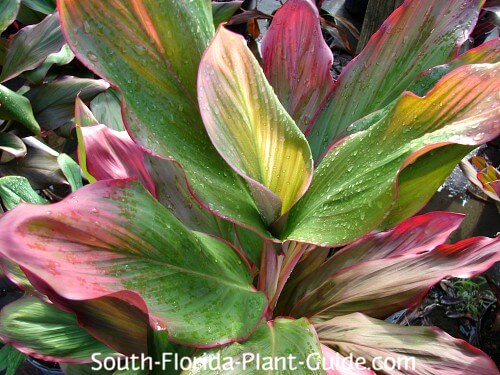
These colorful foliage plants come in almost endless varieties and provide colors like pink, cream, bronze, lime-green, and red to areas with some shade.
Though they're in different plant families, both are easy-care plants.
They look very similar and have almost identical landscape uses, so we've grouped them together here.
To learn the name of each pictured on this page - as on all photos on this site - run your cursor over the photo.
Cordyline plants are typically lumped together and called "ti plants."
The most popular and commonly grown is "Red Sister" cordyline (pictured below), with its brilliant fuschia-pink new growth and bronze-magenta leaves.
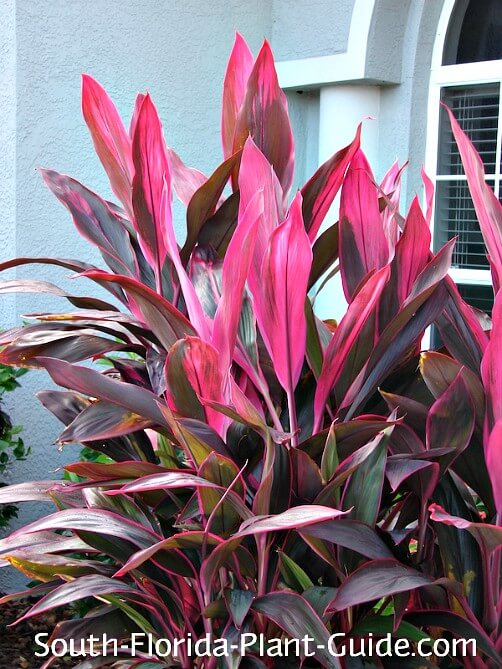
Ti is correctly pronounced "tee," though most of us fall into the habit of saying "tie" simply because everyone seems to do so.
Cordylines show off their best color during cooler weather...a real boon for snowbirds.
They're considered a good luck plant in Hawaii where every property seems to have at least one ti plant.
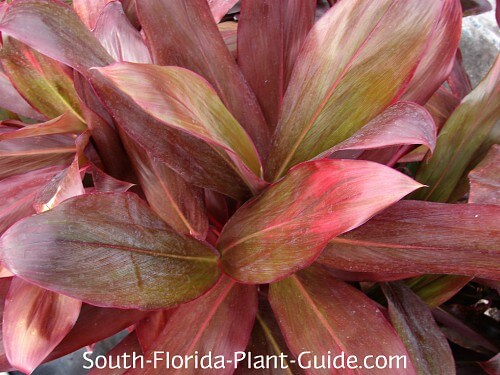
Dracaenas, like cordylines, have the benefit of shapeliness - they fit nicely into narrow spaces - and enough height to set off a tropical garden.
They're also considered to be deer-resistant.
Dracaena marginata (pictured below), the most well-known of this group, has spiky green leaves rimmed with a thin line of red.
It's a very popular houseplant in northern climates, but here it works well as a striking outdoor plant, especially useful in narrow areas.
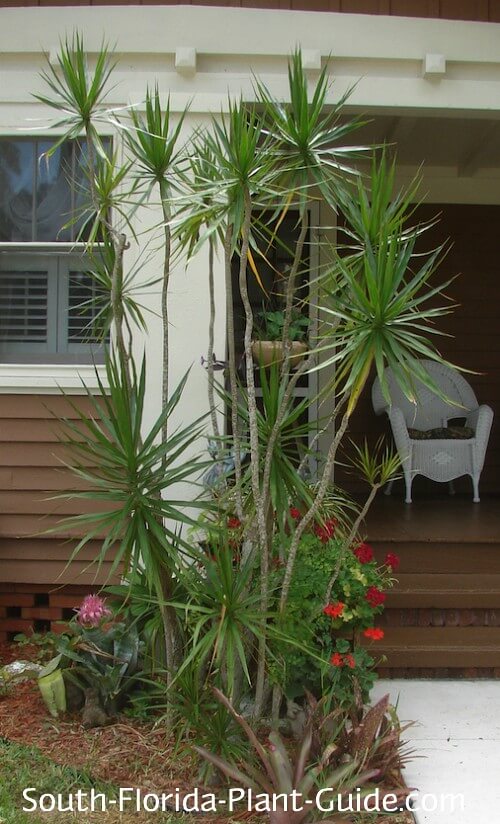
This plant can add architectural interest against a blank wall or makes a unique accent by an entryway.
These plants - both cordylines and dracaenas - do flower...some more noticeably than others.
One, the "Corn Plant" (dracaena fragrans) - pictured below - has extremely fragrant flowers, though the blooms don't look like flowers, more like a bunch of knots on a rope. However if you catch them at dusk tiny white blossoms open in each "knot" to release their heady perfume.
The smell is intensely sweet, especially at dusk.
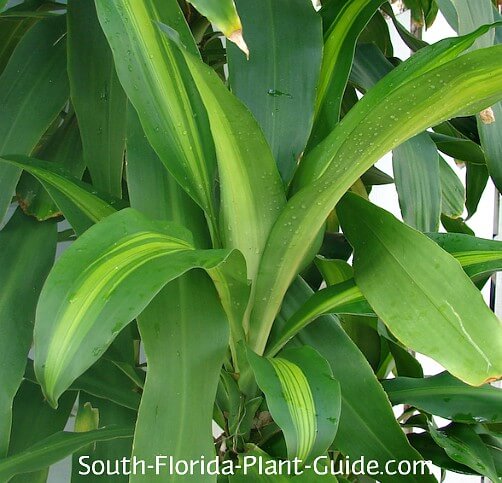
The most common complaint about cordylines (and some dracaenas) is that eventually they can grow tall and leggy, with thin bare trunks (called "canes") and foliage only on top.
To encourage a fuller look at varying levels, prune during warm spring weather. To do this, cut off a cane at a lower height and it will usually sprout a new "head" or two from the sides of the cut.
Rather than chopping off the heads of all the canes at once, cut the tallest one first.
After it sprouts new growth, do the next tallest one. This way some foliage is visible while you're pruning the plant.
Plant each
cutting back into the ground near the base of the original plant (or
start it in a container) - most will root and grow. Remove most of the leaves to help the cutting get rooted.
In some cases, the openness of bare canes can create an interesting silhouette. But if you prefer to camouflage them, use cordylines and dracaenas as backdrop plants or use low spreading plants to hide a bit of the legginess.
A few varieties stay fuller at the base, such as the deeply-colored 'Black Magic' cordyline (pictured below). Strong windy weather can make this plant drop some lower leaves, so a protected spot is best to keep it full.
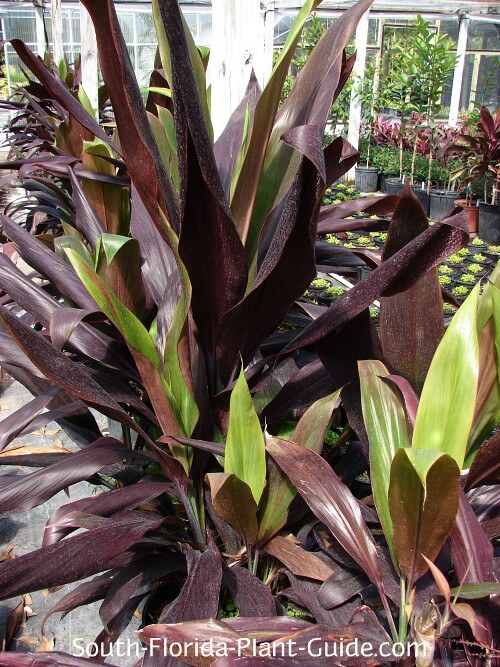
Plant specs
Heights vary by variety but most of these plants are slow growers.
Zone 10 is best but in Zone 9B keep them in containers to move inside during cold weather.
Bright shade works fine for all, though some can take more sun than others...morning sun, preferably.
You often see ti plants doing fine in sunny areas, but they can become brown-edged and raggedy, so give yours afternoon shade.
Ask at the nursery when you purchase one of these plants what kind of light it prefers.
Plant in an area protected from wind so the foliage doesn't become shredded and unattractive.
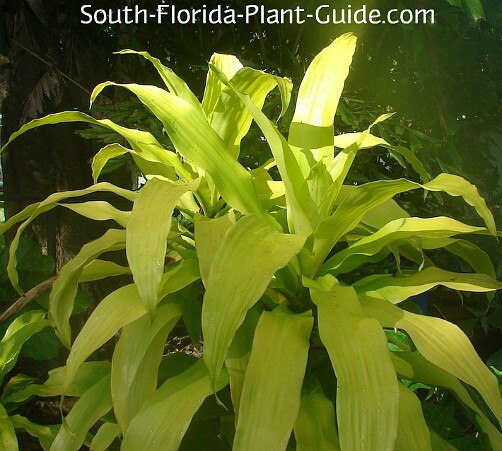
Plant care
Add top soil or organic peat humus to the hole when you plant, especially if the area is very sandy and dry.
Trimming is totally unnecessary, other than pruning in late spring to early summer, if you like, to control height and/or encourage fuller growth.
These plants don't like to stay wet, so give them regular irrigation with time to dry out a bit between waterings.
Dracaenas are a bit more drought-tolerant but, with either plant, too-infrequent waterings will cause the tips of the leaves to turn brown.
Fertilize twice a year (spring and fall) with a good quality granular fertilizer. Don't over-fertilize these plants.
Plant spacing
You can plant groupings of most of these plants very close together for upright plants. A few exceptions are Song of India and Black Magic.
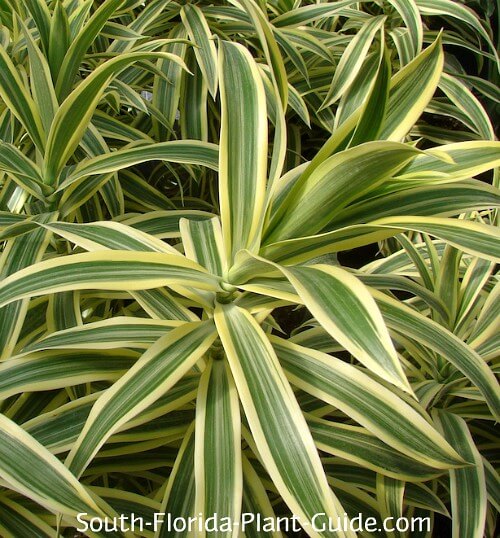
Song of India dracaena (dracaena reflexa) - pictured above - has a
swirling, meandering habit, but dracaena marginata, corn plant dracaena
and others grow straight up.
Black Magic cordyline grows in a large swirly pattern and can grow 8 feet tall or
more. This one needs some elbow room to look its best, so place it at
least 3 feet from the nearest plant.
Depending on variety, these plants can be placed as close as 2 feet from the house. Come in from walks and drives 3 feet to allow for future growth.
Both cordylines and dracaenas make excellent container plants. Dracaenas do fine as houseplants as well.
Landscape uses for cordylines and dracaenas
- backdrop
- tall accent for entry or garden bed
- architectural accent
- semi-privacy plant by a window, deck, porch or patio
- along a blank wall
GOOD SNOWBIRD PLANT? YES
COMPANION PLANT SUGGESTIONS: Variegated ginger, firespike, croton, pinwheel jasmine, hope philodendron, Indian hawthorne, pentas, peace lily, and dwarf tibouchina.
Other plants you might like: Heliconia, Canna Lily
Take a break!
The ultimate guide to low-maintenance plants
and landscaping!
An ebook by
Chase Landre
author of
South-Florida-Plant-Guide.com
Learn more!
Get a greener thumb!
Want to learn more about South Florida planting, watering, fertilizing and dealing with weeds and pests?
See our Gardening How-To section for answers!
Get instant curb appeal!
An ebook by
Chase Landre
author of
South-Florida-Plant-Guide.com
Learn how to get instant curb appeal with fast growing plants and landscaping techniques!


